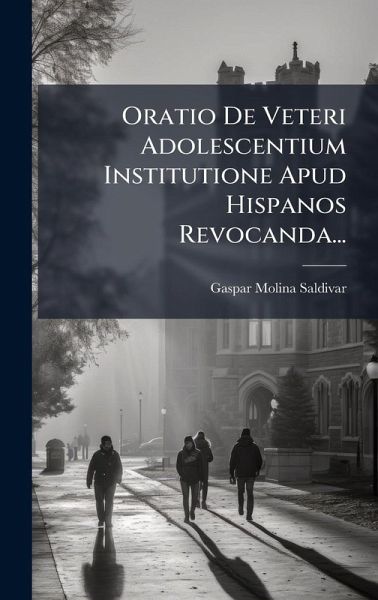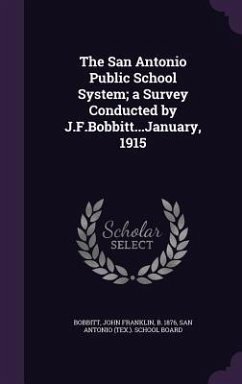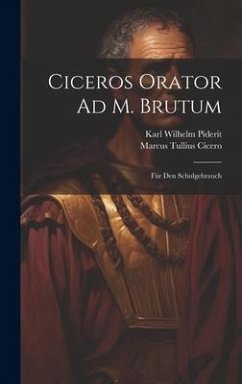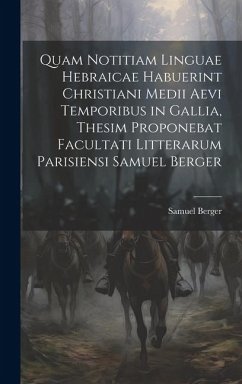
Oratio De Veteri Adolescentium Institutione Apud Hispanos Revocanda...
Versandkostenfrei!
Versandfertig in über 4 Wochen
25,99 €
inkl. MwSt.

PAYBACK Punkte
13 °P sammeln!
Oratio De Veteri Adolescentium Institutione Apud Hispanos Revocanda... is a historical oration written in Latin by Gaspar Molina Saldivar, the Marqués de Ureña. The text advocates for the restoration of traditional methods of educating young people in Spain. This work offers insights into the educational philosophies and cultural values prevalent during the author's time. It explores the importance of classical learning and its role in shaping the character and intellect of young Spaniards. This oration is a valuable resource for scholars interested in the history of education, Latin literat...
Oratio De Veteri Adolescentium Institutione Apud Hispanos Revocanda... is a historical oration written in Latin by Gaspar Molina Saldivar, the Marqués de Ureña. The text advocates for the restoration of traditional methods of educating young people in Spain. This work offers insights into the educational philosophies and cultural values prevalent during the author's time. It explores the importance of classical learning and its role in shaping the character and intellect of young Spaniards. This oration is a valuable resource for scholars interested in the history of education, Latin literature, and Spanish cultural history. The eloquent language and thoughtful arguments presented in "Oratio De Veteri Adolescentium Institutione Apud Hispanos Revocanda..." provide a glimpse into the intellectual debates surrounding education in historical Spain. This work has been selected by scholars as being culturally important, and is part of the knowledge base of civilization as we know it. This work was reproduced from the original artifact, and remains as true to the original work as possible. Therefore, you will see the original copyright references, library stamps (as most of these works have been housed in our most important libraries around the world), and other notations in the work. This work is in the public domain in the United States of America, and possibly other nations. Within the United States, you may freely copy and distribute this work, as no entity (individual or corporate) has a copyright on the body of the work. As a reproduction of a historical artifact, this work may contain missing or blurred pages, poor pictures, errant marks, etc. Scholars believe, and we concur, that this work is important enough to be preserved, reproduced, and made generally available to the public. We appreciate your support of the preservation process, and thank you for being an important part of keeping this knowledge alive and relevant.












